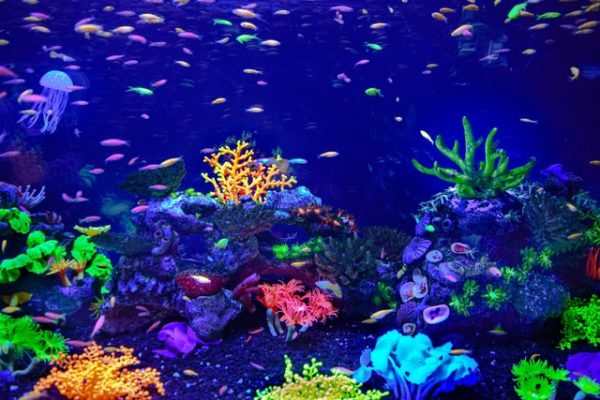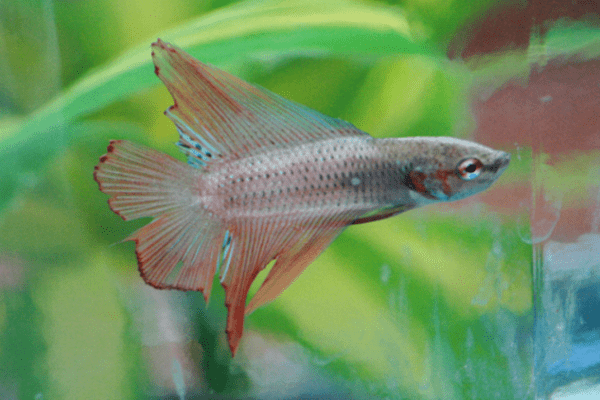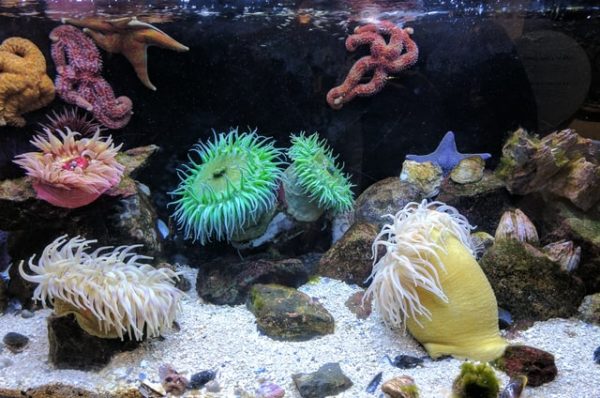Salts play a crucial role in our lives. But does it have an equally rewarding experience for marine life? Should you use aquarium salt for your freshwater tanks? How much aquarium salt should you use per gallon?
The power of salt in an aquarium is diverse. From balancing the water parameters to preventing diseases, it has multiple benefits. Salt has amazing benefits, an effective treatment against bacterial, fungal, and parasitic infections.
However, beyond these, aquarium salts are easily accessible and affordable too. Unfortunately, there are a few downsides to misuse of the salts despite the upsides. We will explore that in detail in this guide.
Table of Contents
How Does Aquarium Salt Work?
In normal situations, adding aquarium salt to the tank increases its salinity. But why would one want to do that? Wouldn’t it kill the fish?
Technically, the use of aquarium salt is for infectious treatments. If your tank is infected with common bacterial or parasitic infections, salt treatment prevents it from spreading.

Treating the aquarium water with salt dehydrates the infection-causing bacteria and parasites. Then, the water is drained out of these organisms due to osmosis, killing them.
But it is understandable for you to be worried about the fish. Ideally, the smaller bacteria, parasites, viruses, and other pathogens die quicker. So, by the time they are dead, you can change the water to restore the optimal parameters.
However, some salt-resistant pathogens attack the fish too. They are resistant to salt treatment, but they have a very high threshold. A fish can’t withstand extremely high-water salinity, so you need to be careful.
Besides spot treatment, adding low doses of aquarium salt every day to the tank reduces the risks of infections in the first place. Salt also replenishes the lost electrolytes in the aquarium water.
It is important to be careful with the amount of salt. Excess salinity is fatal for some fish species. Also, every fish has varying tolerance to the salinity. So, if you have a community tank, you need to keep everyone’s needs in mind.
What Are the Benefits of Adding Salt to A Fish Tank?
Aquarium salt, as we mentioned, has multiple benefits. Not just for treatments, the salt also prevents risks of diseases for the fish. Let us walk you through some of the top benefits for better understanding.
Add Electrolytes
During water change, the aquarium loses a lot of its electrolyte balance. It is a very common phenomenon that most aquarists worry about. However, frequently adding a very low dose of salt can restore the electrolyte balance, enabling the fish to have a comfortable life.
A balanced electrolyte level in the tank also improves gill functions. This enables the fish to breathe comfortably without restrictions.
Has Anti-Pathogenic Properties
Bacterial and fungal growth in the fish tank is common, especially if you don’t know how to care for the tank the right way. Adding aquarium salt treats those issues and kills the pathogens in the tank.
The enhanced water salinity dehydrates the pathogens, killing them in the process. However, you need to be on high alert when adding salt. Since the salt affects the fish too, you don’t want to overdo the salinity.
Since the fish’s mass to surface ratio is less, they die quickly before the salt affects the fish.
Treat Fin Rot and Ich
Fin rot is a common disease caused by bacteria and viruses. In this condition, the fish’s fin appears frayed and damaged. Using optimal salt treatment in the tank can effectively treat the condition without damaging the fish.

Similarly, for Ich, a parasitic infection, salt treatment treats the parasite and alleviates the symptoms. Treating Ich with salt can be a little tricky. You have to measure the right amount of salt per gallon of water. Ideally, you should add 1 tablespoon of salt per 3 gallons of water.
With diligent salt treatment, your fish should be healthy and in their best condition within two weeks. However, severe cases of Ich require a more diligent treatment route.
Does Adding Aquarium Salt Raise pH?
It is a common misconception that adding aquarium salt will raise the water’s pH. That is not how it works.
The aquarium salt is generally sodium chloride (NaCl), which doesn’t impact the pH. However, adding too much salt can increase the salinity and disturb the electrolyte balance of the water.
If the aquarium salts are composed of sodium citrate or bicarbonate (which is rare and non-existent), then those aquarium salts might alter the pH of the water to an extent.
How To Add Aquarium Salt to Freshwater Tank?
Unlike saltwater aquariums, you have to be careful about using aquarium salt in freshwater tanks. Anything in excess will lead to the death of the fish.

So, when should you use aquarium salt for freshwater tanks?
Ideally, two instances call for aquarium salts:
Nitrite poisoning – perfect for newly set-up tanks. The use of 0.3% salinity with aquarium salts reduces the nitrite levels in the freshwater tanks.
Parasites – ideal for treating Ich infestations; use of salt kills the parasites and treats the freshwater fish species.
If you have scaleless fish and live plants in your freshwater tank, we’d recommend avoiding aquarium salts. This can immediately kill them.
What kind of salt should you add?
For freshwater aquariums, a tablespoon of common salt is enough. However, ensure that the salt is non-iodized and doesn’t contain preservations. You can find aquarium salts that are ideally sold for freshwater treatment.
You have two different modes of salt treatment for freshwater tanks – dip treatment and bath treatment.
Dip treatment – involves short exposure of the infected fish to a high concentration of saltwater. The fish are introduced to an aerated container with 3% salinity for up to 5 minutes. The high salt concentration kills the parasites on the spot and cures the fish.
Bath treatment – this is a slow and roundabout process that treats the entire tank. This involves 0.1 to 0.5% salinity in the water. The fish are kept in saline water for three weeks until they feel better. It is used to relieve stress and treat nitrite poisoning.
How Much Aquarium Salt Per Gallon?
The amount and use of aquarium salt in the tank will vary depending on the purpose. For example, what you use for regular use and disease prevention will differ from a disease treatment.
Let us walk you through each of these incidents in detail:
For Regular Use or Disease Prevention
Although salt treatment is prevalent in treating certain diseases in fishes, it is also a preventive measure. This is one of the reasons why aquarists use it in their tanks. It is 100% natural, safe and good for your fish.
We’d recommend adding 1 tablespoon of salt per 5 gallons of water for preventive measures. This dosage is ideal for both brackish and freshwater tanks.
For Disease Treatment
This is where you need to do things very vigilantly. The use of aquarium salts for disease treatment involves three consecutive dosages. The dosage of the aquarium salt is gradually increased in progression to treat any diseases or infections in the water.
First Dosage
This is the low-salt dosage used as the first line of treatment.
Quantity – 1 tablespoon per 3 gallons of water.
Ideal for – most freshwater fish species can survive and thrive in such low water salinity.
Not ideal for – some catfish species don’t respond well to the first dosage of the aquarium salt.
Duration – one week.
If the infection or the disease doesn’t get better, the aquarist has to move to the second step.
Second Dosage
This would be the next stage if the infection didn’t respond well to the first low-salt dosage.
Quantity – 1 tablespoon per 2 gallons of water.
Ideal for – it helps treat Ich, which is a severe parasitic infection in the fish.
For severe Ich infection or other fatal bacterial infection, the third and the highest salinity treatment is adviced.
Third Dosage
The last stage of salt treatment for the aquarium involves a higher salt concentration in the water. This treats other serious conditions like bacterial and fungal infections, not just for Ich.
Quantity – 1 tablespoon per 1 gallon of water.
Ideal for – high salt-tolerant fish species like danios, silver dollars, tetras, etc.
Not ideal for – catfish and scale-less fish species.
This is the last stage of salt treatment. If the fish still doesn’t respond to the treatment, it is a sign that the damage is beyond repair. Also, you never know which fish species will respond to the increased salinity. So, once you add the salt, stay vigilant. This is crucial, especially if you don’t want to kill the fish. Sometimes, changing 30% of the water is ideal too.
How Much Salt Do You Put in A 10 Gallon Tank?
As we mentioned, adding salt to an aquarium depends on the purpose. If you add it for a common purpose and disease prevention, you’d have to add around 2 tablespoons of salt per 10 gallons.
How Much Salt Do I Put in A 40 Gallon Tank?
You need to add 8 tablespoons of salt per 40 gallons for regular use. However, for salt treatment, you will need around 10-12 tablespoons of salt, depending on the level of treatment. For the third dosage, salt might exceed 30 tablespoons per 40 gallons. We’d recommend proceeding cautiously for these.
Symptoms Of Too Much Salt in Aquarium
Irrespective of whether you are a beginner or an experienced aquarist, knowing about the ideal salinity of different marine life is crucial.
Anything in excess is bad for us. So, adding excess salt to the aquarium will eventually result in the fish’s death. Instead of supporting their health and getting rid of infections, an extremely high salinity will dehydrate the fish and kill them.
This is one of the primary reasons aquarists suggest staying vigilant during the salt treatment. You want to address every possible change of trait in the fish. If they were active before and have suddenly become quiet, it is a sign of salt imbalance.
If the fish isn’t getting better despite the three dosages of salt treatment, you want to avoid overdoing it further. Ideally, we’d recommend keeping a close eye for symptoms like:
- Sporadic swimming
- Lethargic behavior
- Lack of appetite
- Drowning to the bottom of the tank
- Skin infections, etc.
Skin-related issues are very prominent in tanks with scale-less fish. If you notice red spots or lesions on the fish’s body, it could be a sign of excessive salt. Also, excess salt affects the aquatic plants in the tank beside the fish. So, keep an eye out on the plants too.
How Often to Add Salt to Freshwater Aquarium?
Freshwater aquariums don’t need salt as a mandatory addition. However, as an aquarist, you add salt as a preventive measure.
So, instead of doing it regularly, add a low amount of salt every few days, depending on the species in the tank.
If you have scale-less fish, catfish, or highly sensitive plants, we’d recommend avoiding salt altogether. However, for emergency cases, add salt once a week or once every two weeks to reduce the risks as much as possible.
Also, while you are at it, ensure that you do a 30% water change in your tank to reduce the risks of damage to the marine life in the tank.
Can I Use Normal Salt Instead of Aquarium Salt?
Normal salt works, too, if you don’t have access to the market formulated aquarium salt. However, you need to ensure that the salt is non-iodized and doesn’t contain unnecessary additives.
Kosher salt is a good substitute for the standard aquarium salt that you get in the market.
Can I use Melafix and Aquarium Salt Together?
Melafix is a natural anti-bacterial treatment for aquarium fish. It is highly effective and treats different pathogen-related infections in the tank.
So, can you mix Melafix and salt? The answer is Yes.
It is okay to combine these two; however, it is not a standard. You can’t expect to notice “better” results because you mixed these two. Ideally, each of these treatments depends on the condition of your tank inhabitants.
If the fish has a severe bacterial infection, the combined treatment with melafix and salt might show better results. However, we wouldn’t recommend using the two in combination for minor issues.
Wrapping Up
The use of aquarium salt for different fish species is very prevalent. Besides its effectiveness, salt is also a natural treatment option, making it popular among most aquarists. If you were confused about the aquarium salts administration, we hope this answers everything in detail.
